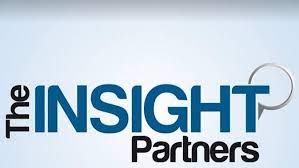Introduction
In today’s fast-paced and ever-evolving business landscape, staying ahead of the curve is crucial for success. One of the key drivers of this evolution is the widespread adoption of Software as a Service (SaaS). SaaS has become a game-changer, revolutionizing the way businesses operate and manage their processes. This blog delves into the rise of SaaS, its definition and benefits, and showcases real-world success stories of businesses that have leveraged SaaS to their advantage. We’ll explore how companies like Salesforce, Slack, and Adobe Creative Cloud have transformed their industries. Moreover, we’ll examine the diverse applications of SaaS across different sectors, including retail, healthcare, and finance, shedding light on the immense potential of this technology. While SaaS offers numerous advantages, it’s essential to address the challenges and considerations that come with its implementation, such as data security and integration concerns.
The Rise of SaaS
As the business world becomes increasingly digital, traditional software models have had to make way for more flexible and efficient solutions. SaaS, which stands for Software as a Service, has risen to prominence as a leading software delivery model. Unlike the traditional model of purchasing and installing software on individual devices, SaaS allows users to access applications and services over the internet, typically on a subscription basis. This shift from on-premises software to cloud-based solutions has ushered in a new era of agility and convenience for businesses of all sizes.
Definition and Explanation of SaaS
SaaS is a cloud computing model that provides software applications and services to users via the internet. It eliminates the need for users to install and maintain the software on their own hardware, as the software is hosted and maintained by the SaaS provider. This approach offers several advantages, including accessibility from anywhere with an internet connection, automatic updates, and scalability to meet the evolving needs of businesses.
Benefits of Adopting SaaS for Businesses
The adoption of SaaS offers a wide range of benefits for businesses:
-
Cost-Efficiency: SaaS reduces the upfront costs associated with traditional software, as there is no need to invest in expensive hardware or IT infrastructure. Businesses can pay for what they use on a subscription basis, making it a cost-effective choice.
-
Accessibility and Flexibility: SaaS applications are accessible from any device with an internet connection, providing flexibility for remote work and business operations from anywhere in the world.
-
Automatic Updates: SaaS providers handle software maintenance, ensuring that applications are always up to date and secure, without requiring user intervention.
-
Scalability: Businesses can easily scale their usage of SaaS applications up or down to match their changing needs, making it an ideal choice for growing companies.
SaaS Success Stories
Several industry leaders have harnessed the power of SaaS to revolutionize their operations and deliver outstanding results. Let’s explore a few notable success stories:
Salesforce: Revolutionizing Customer Relationship Management
Salesforce is a pioneer in SaaS, transforming the customer relationship management (CRM) space. Their cloud-based CRM software empowers businesses to manage customer data, track leads, and enhance sales and customer service processes. With its extensive range of features and customization options, Salesforce has become an indispensable tool for companies looking to build and maintain strong customer relationships.
Slack: Transforming Team Collaboration
Slack has redefined the way teams communicate and collaborate. This SaaS platform provides a centralized hub for messaging, file sharing, and integration with various productivity tools. Slack has become a cornerstone of remote work and efficient communication, enabling teams to collaborate seamlessly and stay connected, regardless of their physical location.
Adobe Creative Cloud: Empowering Creatives
Adobe Creative Cloud has revolutionized the creative industry by offering a suite of SaaS applications for graphic design, video editing, and more. With regular updates and a subscription-based model, Adobe provides creative professionals with the latest tools and features, allowing them to unleash their creativity and remain competitive in a rapidly evolving field.
SaaS in Different Industries
The versatility of SaaS is evident in its applications across diverse industries:
Retail: Shopify’s E-commerce Solution
Shopify is a SaaS platform that empowers entrepreneurs and businesses to establish and manage their e-commerce stores. It offers a user-friendly interface, various customization options, and integration with numerous payment gateways, making it a go-to choice for e-commerce businesses.
Healthcare: Athenahealth’s Electronic Health Records
Athenahealth provides a cloud-based solution for electronic health records (EHR) and practice management. This SaaS system streamlines administrative tasks, enhances patient care, and ensures compliance with healthcare regulations, ultimately improving the efficiency and quality of healthcare delivery.
Finance: QuickBooks’ Accounting Software
QuickBooks by Intuit is a popular choice for small businesses and accountants looking to manage their financial operations efficiently. This SaaS application simplifies accounting, bookkeeping, and financial reporting, making it an essential tool for financial management.
Challenges and Considerations
While SaaS offers numerous advantages, businesses should be aware of certain challenges and considerations:
-
Data Security and Privacy Concerns: Storing data in the cloud can raise security and privacy issues. It’s essential to select a trusted SaaS provider and implement robust security measures to protect sensitive information.
-
Integration with Existing Systems: Integrating SaaS applications with existing on-premises systems or other SaaS platforms can be complex. Ensuring smooth data flow and compatibility is crucial.
-
Vendor Lock-in and Contract Flexibility: Businesses should carefully review SaaS contracts to avoid vendor lock-in and ensure they have the flexibility to adapt to changing needs.
How Tagline Infotech Will Help You Develop a SaaS App
Tagline Infotech is a trusted partner for businesses looking to develop their own SaaS applications. With expertise in software development and cloud computing, they can guide you through the process, from ideation and development to deployment and ongoing support. Their team can tailor solutions to meet your specific requirements and ensure that your SaaS app becomes a powerful asset for your business.
Conclusion
The era of SaaS is well and truly upon us, transforming the way businesses operate and adapt to change. From streamlining customer relationship management to enhancing team collaboration and empowering creatives, SaaS has a wide-ranging impact on various industries. Its benefits, including cost-efficiency, accessibility, and scalability, make it an attractive choice for businesses of all sizes. However, it’s crucial to address the challenges associated with data security, integration, and contract flexibility. With the right guidance and expertise, businesses can harness the power of SaaS to stay competitive and thrive in the digital age.
Frequently Asked Questions
-
What is SaaS and how does it work? Software as a Service (SaaS) is a cloud computing model that delivers software applications and services to users over the internet. It eliminates the need for users to install and maintain the software on their own hardware, as the software is hosted and maintained by the SaaS provider.
-
How is SaaS transforming businesses? SaaS is transforming businesses by providing cost-efficient, accessible, and scalable software solutions. It enhances productivity, flexibility, and collaboration, making it an attractive choice for businesses looking to adapt to the digital age.




